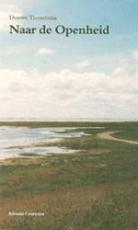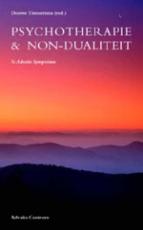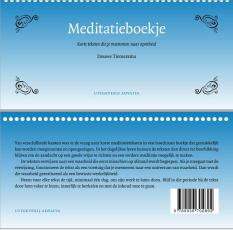Advaita Post 13-15 - mYSELF? i AM EVERYTHING;;;
August 23, 2012
--- Myself, I am everything, there is no limit to my self-being. And yet I am not that ---
Just totally let the unfamiliar in.
*****
What luck:
I am not stuck
to any condition whatsoever,
even to that of 'I' and 'happiness'.
What luck.
*****
Bullashah (18th century, Punjab)
You are the light of the world,
Everything is dependent on you.
Looking through the eyes of everyone,
You see as much darkness as light.
Dreaming, waking and deep sleep
Pass over you again and again.
Bullashah says: You are the source of all light,
You are unchangeable.
Go within to your own Self
And know that You are the bearer of the universe;
When you shine, the whole world is illumined;
The phantom that makes you tremble
Is just your own projection.
Bullashah says: Give up this illusion
And break through the illusion of individuality.
*****
Text Satsang
The negative and the positive path
From an Advaita talk with Douwe Tiemersma, Gouda, November 3, 1999
Most people here know that the inquiry into what you are and what you are not is important to the advaita approach. This inquiry is geared on the one hand towards a recognition of "not this, not that", or, neti, neti, as you will also find in the Upanishads. On the other hand, there is the return to yourself that you already are and that infinitely is. Many people experience confusion about the relationship between these two types of approach. Either they stay with one of the two or they have no idea how to begin to tackle them both. It is important to see that these two movements fully belong together. What seems most obvious to emphasize depends upon your situation. But you always have to deal with both approaches, even if initially you start to work with the one method or the other.
For many people, the unlimited self-being is not clearly evident. There is frequently an identity that is very limited and distorted by their own thinking function and by many things from the past. Then when you begin with the method of "not this, not that", frequently there is the problem that a distance has been created in an artificial way in which there is a certain tension. Then it isn't clear how things can proceed.
Therefore for most people it's important to first establish contact with the positive feeling of self-being. It's already there in daily life when you say: I do this, I do that. Everyone has a sense of themselves. That is something different than the notion of an ego. The ego is a particular psychological functioning which mediates between yourself and the world for bringing the things that come into play internally into alignment with the external world, for making use of all kinds of things from that world, for self survival, for always becoming more important, more strong, more beautiful, and so on. The self feeling goes beyond the functioning of the ego-self, because the sense of self is already a reflection of the totally pure self without boundaries. You can ascertain that by going within. When you try to look for your feeling of self somewhere in your body, it's usually the strongest in the heart region. You can withdraw there internally to the heart region and enter into it. There is a certain bodily feeling of self-being that is clearly present there. Don't remain positioned in your head, but literally sink down to and in your heart. When you really do that, you experience that there you are yourself and - as I said - that's something different than the ego function. There is no defensiveness in that self-being, no tendency to polish up a 'me', to strengthen it and so on. There is rest and relaxation in the heart of that self-being. So here you are experiencing the two aforementioned aspects: it is a positive self-being, even though it's still limited and localized, but it also immediately includes that which it is not: it's not an ego tension.
If you continue with the inquiry into your true nature, then this movement with these two aspects continues. You get the sense: the body - what have I got to do with it? But on the other hand: if I am not the body, then I am certainly myself as witness of the body. So too with the feeling and the thinking functions: I am not the feeling and the thinking but I certainly am the observer of them. On the level of the observer, again it is a form of self-being. I am myself, also as feeling-sense, as observer. It's important to not remain focused on the negative side because then you remain stuck looking at the old structures of your body and identity. If you keep busy doing that there then you can have the tendency to cramp, because new things continually crop up. You remain focused on something limited that you are not, but which you still hold on to in your consciousness. That's the limitation of vipassana meditation and mindfulness.
On the other hand, by allowing your consciousness go expand into the core of yourself, you can determine that there is a new situation that is much freer than the previous one. That is a positive affirmation in which you are more yourself. Beginning from that feeling of self an ongoing purification can proceed on all levels. That is also the negative aspect, because this purification means: this doesn't belong here and that goes overboard. At the same time you remain present in this positive sphere of self-being. This positive aspect will need to remain present.
When you obscure even one aspect, you get problems. You see many examples of that in the tradition. When you stay with just the positive aspect, everything is very nice and beautiful, but if the decisive insight "I am not that" isn't there, it just remains a nice feeling. It doesn't really change anything, because the beautiful sphere remains mixed with all kinds of personal aspects. You are stuck there because you think everything is so beautiful. So you will need to look further: not this, not that. Yet when it's only about this decisive insight, a cold situation easily arises. A sphere of non-being arises there, but only in a negative sense.
In Advaita there is no duality, precisely on this point of the positive being and the non-being. This is one of the last (apparent) dualities. Both must certainly remain constantly present: the decisive insight (not this) and the positive affirmation (this is it). That 'negative' and 'positive' affirmation is there from the beginning to the end. In advaita, non-duality, the positive and the negative come together in an unproblematic way because ultimately they are not separated. You can accept both and you experience it flowing into a nondualistic situation. It's clear that actually you can't say anything about it, because when you speak about the negative, you must also immediately speak about the positive. Both belong together and aren't to be separated. Otherwise you're back again in duality.
So just let your situation develop in this way. If you keep everything open, both as regards to the expansion of self-being as well as to the return to the Absolute, everything will continue to develop in a good way. Stay alert and you will see how it works on every level, including the level of the emotions. If there is a certain feeling, then you recognize it as your feeling, and that is a positive affirmation. But immediately there is also the sense: it is certainly my feeling, but am I completely that? This recurs on every level. I have this identity in the world. Now am I that or am I not that? Partially yes, and in another sense not at all. Ultimately, you are everything. You are the Self of everything, because there is no border to the self-being. But here too: are you really that? No, because there is no person there who has anything to do with it. These two aspects always go together. And that is wonderful. Myself, I am everything, there is no border to my self-being, it is infinite. And yet I am not that: all that appears is finite and limited; it appears and disappears once again. So the ultimate is inexpressibly open.
Er is geen tweeheid
als je ontspannen bent
in zelf-bewustzijn
is dat duidelijk.
Boeken
Douwe schreef en redigeerde gedurende zijn leven boeken. Via onze uitgeverij zijn deze nog verkrijgbaar.



